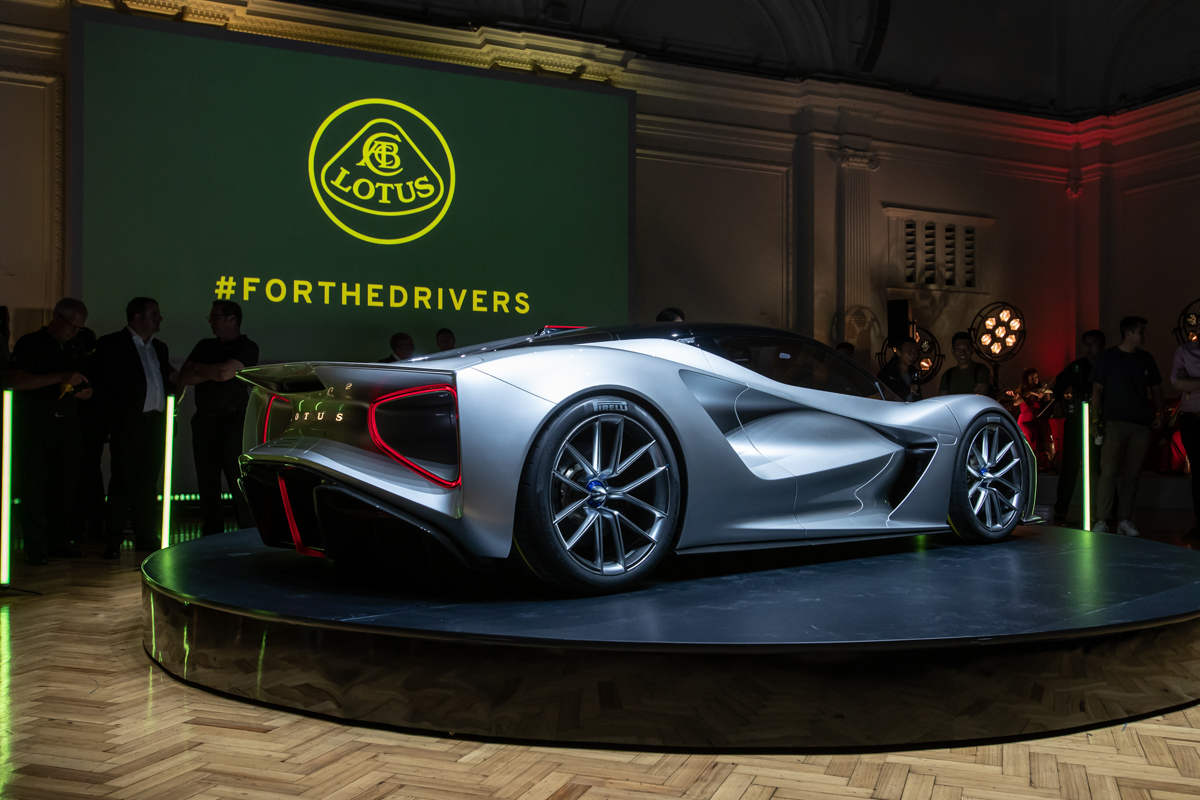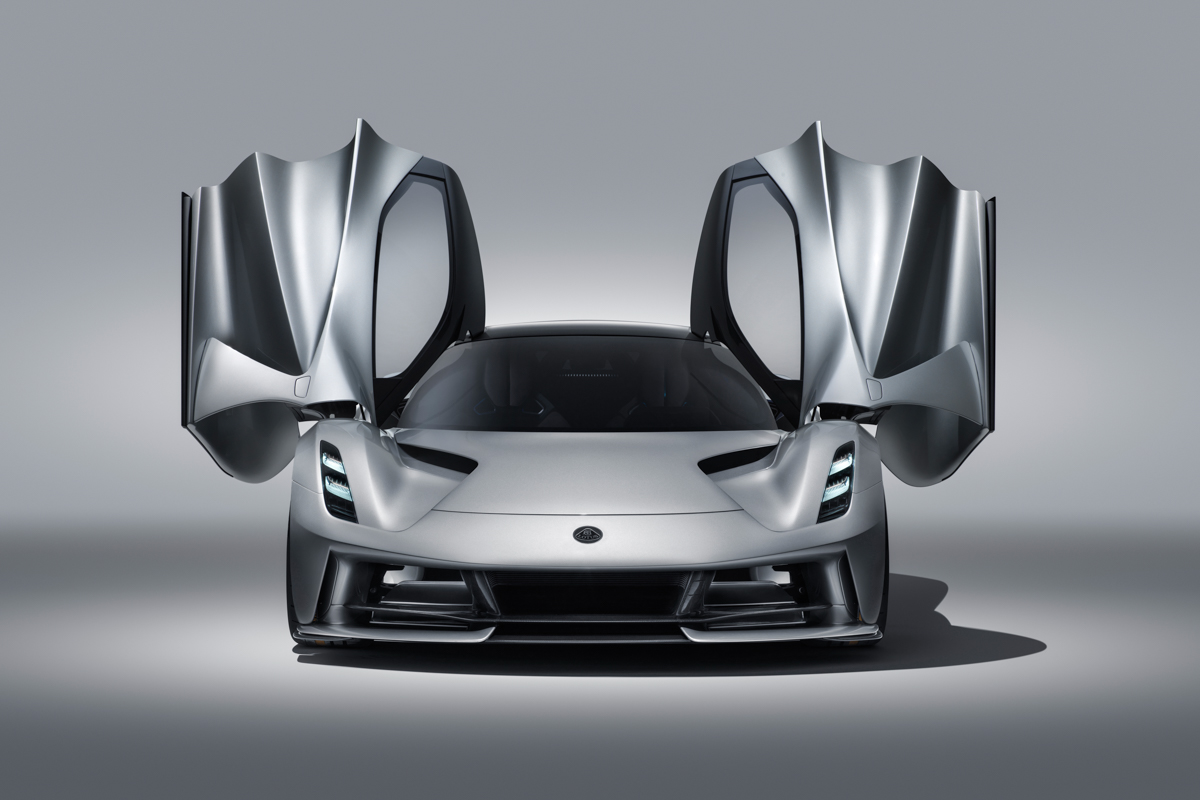The DriveNation Instagram feed recently ran an enjoyable bit about the revival of Lotus Engineering, saying “Once clients came from around the world for that Lotus magic but, in recent years, the department dwindled down to almost nothing.”
A couple of days later, I swapped some emails with Lotus Engineering’s new Commercial Director, Dan Burge. It was an unconnected fluke: I was chasing a Honda CR-V for sale that turned out to be owned by Dan’s parents. Formerly of Prodrive and Williams Advanced Engineering, Dan has been criss-crossing the world since joining Lotus last month. Our brief encounter inspired some research on the story of Lotus Engineering.

Lotus Engineering Limited
Anyone with an interest in cars knows something of Lotus. Founded as a sports car manufacturer in the late 1940s, its early cars were built in a pub car park, but they were still beautiful. One of my first jobs when I immigrated to London was working with Rover dealer, Peter Walker. Peter raced some famous Lotus 15s and seeing how they were revered in his household was an education in what Lotus means to the English.
Until the Elise was revealed, the motor trade regarded Lotus road cars as per the acronym: Lots Of Trouble, Usually Serious. The parent company’s history has also been pretty up and down. Founded by Colin Chapman and Colin Dare in 1952, Lotus started as Lotus Engineering. Team Lotus was formed in 1954 and raced in Formula 1 from 1958 to 1994. Lotus Cars was split off from its engineering parent in 1959.
Lotus Engineering Ltd was incorporated in 1980. Companies House shows three current officers: company secretary, Dr James Bradley, was appointed in April 2018, while directors Daniel Donghui Lui and Feng Qingfeng (CFO and CTO of Geely Auto Group) were appointed in September 2017. Corporate filing history for the business goes back to the mid 1980s and tells an interesting story, if you like looking at figures.
Embodying a British zeitgeist from the 1950s through the 1970s, by 1980 Group Lotus was struggling. Recession hit the company hard and annual production sank below 400 cars. However, Chapman had amassed vast brand value as an engineer and in 1982, Toyota engaged Lotus to help develop its chassis technology. In return, Lotus got Toyota components for the new Excel.

DeLorean and the death of Chapman
Things were looking up for Lotus when Chapman died suddenly in December 1982. A deal to develop the DeLorean’s chassis unravelled into chaos (along with DeLorean) soon after and the British tax authorities ring-fenced £84 million of Lotus assets: a sum of money it claimed had gone missing from government subsidies paid to DeLorean.
Mike Lawrence’s warts-and-all Chapman biography puts the total at more like £10 million, but does not gloss over the alleged deception: something Chapman supposedly could have got ten years in prison for had he not passed away. Adrian Newey’s autobiography mentions 1978 World Champion Mario Andretti’s belief that Chapman faked his own death on the basis of the scandal, but that’s a whole other story.
Back to Lotus Engineering Limited. The media release for the reborn consultancy mentions the Corvette ZR-1 LT5 (1990) and Aston Martin DB7 as part of the brand’s heritage (1994), but Companies House shows that Lotus Engineering Limited submitted accounts as a dormant company from at least 1984 to the end of 1997, until it once again began trading.

Lotus Engineering and the General Motors umbrella
Lotus was owned by General Motors from 1986 to 1993, making the Corvette link obvious. Aston was part of Ford from 1988 to 2007, so helping to repackage the Jaguar XJS as the DB7 was a little more complicated.
The MR2 (1984) exploited an existing connection between the two firms, which continued through the use of Toyota engines in the Lotus Elise (1996). Other well known projects by Lotus Engineering projects included the updated Isuzu Piazza (1987), which came as part of GM’s tie up with Isuzu that had started in 1971.
The aforementioned Volvo 480 (1985) was a low-key Lotus Engineering project that did not come from under the GM umbrella. I worked in a few Volvo dealerships at the end of the 1980s and remember the typical client as neither youthful nor sporty. The 480 Coupe with “handling by Lotus” and an uninspiring 1.7-litre Renault engine tuned by Porsche was an attempt to inject some new blood into the showrooms, but I remember only older ladies with big fluffy dogs driving 480s from new. The model was axed in 1997 and is a rare sight on UK roads nowadays.

Lotus, Bugatti and Proton
Romano Artioli bought Lotus in 1993 and ran it alongside ownership of Bugatti until his bankruptcy in 1996 (the Lotus Elise was named after his granddaughter). In 1996, Artiolo sold Lotus to Proton Cars of Malaysia to help pay off some debt.
Proton started filing accounts for Lotus Engineering Limited in 1998: the first accounts in more than a decade. 1997-98 showed profits of £1.3 million on turnover of £6.1 million, with £1.4 million on £7.2 million turnover the following year and £947,000 on £9.1 million the year after that.
In 2001, eight directors resigned and the company reported a profit of £2.7 million on turnover of £14.8 million. Profit went to £2.5 million and then £4.2 million on turnover of £21.6 million (01-02) and £24.6 million (02-03) respectively. Zero to £25 million turnover for an engineering consultancy in six years of accounts is quite interesting.
After that, things began to tail off. The following year, Lotus Engineering Ltd paid a dividend of £13 million, declaring profits of £358,000 on a turnover of just £1 million. Income from asset investments brought in £2.9 million in 2004/5, but actual turnover fell to £183,000. Income dwindled further through 2005 and subsequent years show the company as a non-trading subsidiary of Lotus Cars Limited.

Dany Bahar arrives
The controversial Lotus CEO, Dany Bahar, is listed as a director between November 2009 and June 2012. After he goes, the 2012-2013 accounts state that the company is regarded as a going concern. A payment of £4.1 million owed by Lotus Cars appears on the balance sheet, underwritten by Proton’s parent. These accounts are repeated annually until 2017, when the company once again changes hands.
China’s Geely Group acquired its majority stake in Proton in 2017 and things start developing. The accounts now show Geely as underwriting the £4.1 million and new articles of association regarding conflicts of interest are filed. Accounts submitting covering the period to the end of December 2018 show that the company remains dormant, but the hiring cycles through 2019 suggest that fresh accounts are imminent.
Lotus Engineering: the origin story
Origin stories are perhaps the most powerful tools in marketing. Shaping an origin story capable of triggering the right audience is a surefire route to powerful associations in the minds of buyers. Those instant clicks create strong brand allegiances that do not require substantial marketing investment. Less of the hard sell saves time and money.
There are more big advantages to running an engineering and design consultancy as a side arm of a somewhat anonymous parent. UK buyers would definitely not take to a Geely Elise: Lotus is the trigger in that proposal.
While Lotus has confirmed its future as a purely electric sports and hypercar manufacturer (such as the remarkable Evija seen here), the relaunch of its engineering subsidiary, whether to cross-kudos other Geely products – a Volvo roadster for example – or a more workaday executive with handling by Lotus, will keep the engineering side ticking over until the globetrotting commercial people get a foothold.

Lotus Cars: UK and China
Although many future Lotus cars will be manufactured in China, there are obvious marketing upsides to maintaining the engineering base at Hethel, as well as a new office near me in Warwick. There will also be financial upsides to the continued presence in the UK: Government subsidies for electric car development, for example. Alongside chassis tuning of future collaborations, we may well see Lotus-branded drivetrains in sporty derivatives from less evocative mass manufacturers. Lotus has powertrain history, with GM’s Corvette and EcoTec engines.
However the story unfolds, the continued presence of a Lotus subsidiary at the cutting edge of automotive engineering is essential to the brand’s future. Maintaining the brand’s connections to the iconic image of Chapman standing in the pits is a hardwired connection to the hearts and minds of British car buyers and what sells well to the UK cognoscenti is usually a success elsewhere.
The comment below from one forum post on the subject of Chapman’s legacy demonstrates just how deep the British love of Lotus runs: something that has not faded since his death almost forty years ago.
Chapman’s early business life is similar to Bernie Ecclestone’s, selling cars in post WW2 Warren street and the rather sharp ethics seem to have the same air about them. I believe myself that his early passing was simply the result of not sleeping for the best part of thirty years and using pills to stay awake: the body can only take so much. Nevertheless, I find Chapman the most fascinating individual in motor racing, and that is saying something in a sport that has attracted some pretty outlandish people over the decades.
Given the emotional attachment of British enthusiasts to the entire Lotus myth, the revival of the engineering brand that underpins the entire origin story of Lotus Cars under the umbrella of an automotive group that is currently winning all the sports has a strong chance of engagement. While the true Chapman story may fall some way short of the legend, his maverick appeal endures.
SHARE • EXPLORE • SUPPORT
Ferdinand blogs my freelance adventure with Porsche at the centre. To support the blog or engage with me in other ways, you can:


Hi John, Where did you learn all Lotus cars will be built in China?
Hmm, that is a good question Jeremy: can’t find the link now but sure it was Autocar or similar. I will edit the text until I track that info down again.